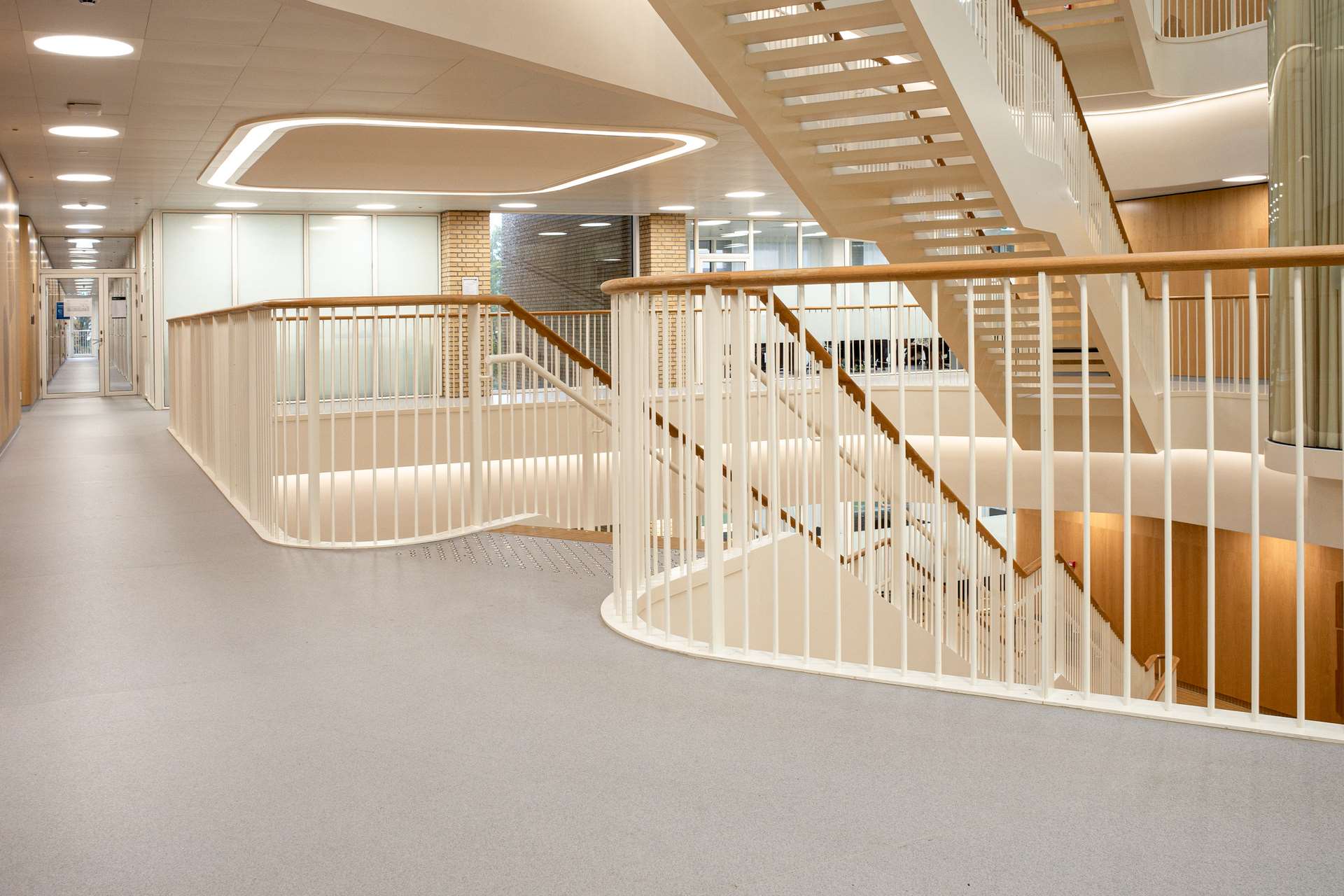
Can't see the region you're looking for? You can find a list of our global locations here

The Aarhus University campus is easily recognisable with its long yellow brick buildings rising between trees, mature plants, lakes and paths in a park close to the city centre. The architecture of The Skou Building, which was named after Nobel Prize winner Jens-Christian Skou and is home to the Institute of Biomedicine, needed to be retained, while modernised.
Architect company CUBO Arkitekter designed the space, which was opened in 2018 and won the City Architects Award in 2019, with a focus on reinterpreting the campus architecture. The building is designed as two staggered lengths that meet in a central atrium. Glass slits have been inserted vertically throughout the building, affording wonderful views of the external spaces and the local cathedral.
Inside there has been an emphasis on reducing the number of different materials used, to create a simple, bright and natural look throughout. At the same time, some of the organic, natural shapes in the green spaces outside are drawn into the building, promoting the biophilic design.
The first two levels of The Skou Building now feature white walls, oak interiors and large glass sections, continuing the biophilic feel. To provide safety throughout the 9000 m2 of corridors and laboratories on the top six floors, Altro Walkway 20 in Cloud has been used, reducing the risk of slipping to one in a million. In addition, 750 m2 of Altro Walkway 20 SD static dissipative flooring in Fog has been used in laboratories which had specific safety requirements. To complete the biophilic design, works of art have been used throughout the building to bring the outside in.
Altro Walkway 20 is our incredibly popular, durable 2mm safety floor that prevents both slips and wear throughout the product’s life.
The range offers 30 colours – both bright and muted as well as decorative designs with eg coloured flakes, which gives you greater design flexibility.
With the static dissipative version of Altro Walkway 20, you can minimise the risk of damage to electronic equipment such as computers that are sensitive to static electricity. The floor is ideal for laboratories, computer rooms and places where electronics are gathered.
Download the PDF to see products used in the photos and recommendations
We chose Altro Walkway™ 20 in a warm colour with tiny sparkles to get a homogeneous, fine look. It was crucial to create unbroken coherence through the building. The floors should just be able to continue without stopping or switching between materials.
Altro Walkway™ 20 is functional as well as simple in expression. In that way it helps to emphasise the natural and bright aesthetics which was so important to achieve throughout the building.